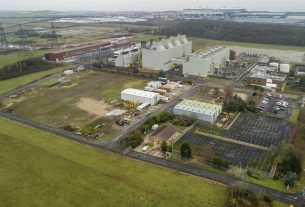Italy – Three innovative carbon capture technologies developed by Ecospray for the marine sector include the use of amines, calcium hydroxide, and molten carbonate fuel cells to reduce CO2 emissions.
The IMO-International Maritime Organization has set a goal of zero CO2 emissions by 2050 for shipping, but the path to get there is less clear. Ecospray believes that carbon capture and storage (CCS) systems are a critical solution for the shipping industry, particularly in light of the first emission target – a 40% reduction by 2030 – which is an intermediate step on the way to the IMO’s 2050 zero-emissions goal. These systems will also contribute to keeping global warming below the 2°C mark.
Carbon capture with amines
The use of amines to absorb CO2 is the first technology that can be implemented both in terms of “readiness” and in terms of potential application sectors. Indeed, this technology is based on an approach that has already proven successful in other industries, which Ecospray has now applied to the marine sector, reducing ship environmental impact and energy consumption. The latter are two factors that are less important in sectors like the oil industry, but that become critical as soon as the technology is installed on board a ship – the solution’s reliability, as well as the non-hazardous nature of the chemicals used, is without a doubt its most appealing feature.
Carbon capture with calcium hydroxide
In terms of the capital required for the application and use of this technology, calcium hydroxide absorption of CO2 appears to be the best option currently available. This system necessitates space on board for bulk storage of the chemical reagent but not for CO2 itself, making it ideal for installation on bulk carrier ships.
Carbon capture with MCFC
Molten Carbonate Fuel Cell (MCFC) technologies allow for CO2 capture and energy production at the same time. As a result of their ability to capture carbon dioxide in exhaust fumes and generate additional clean energy, these technologies are considered strategic in the context of the energy transition. This is, without a doubt, the most technologically complex solution, but it is also the one that guarantees the best results in terms of emissions reductions and company operating costs. These technologies are not limited to a specific ship type: they can be used on all types of engines (2-stroke and 4-stroke) and with all types of fuels, including HFO and LNG.




